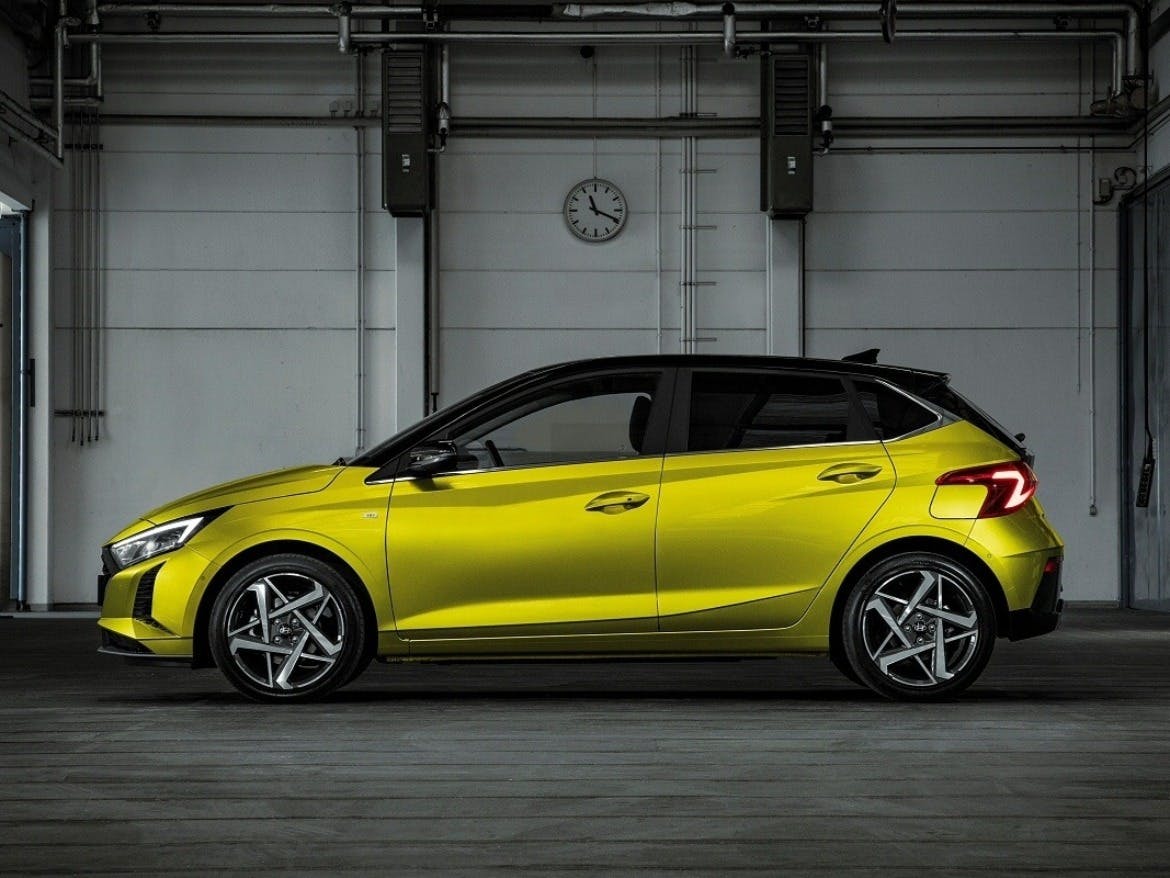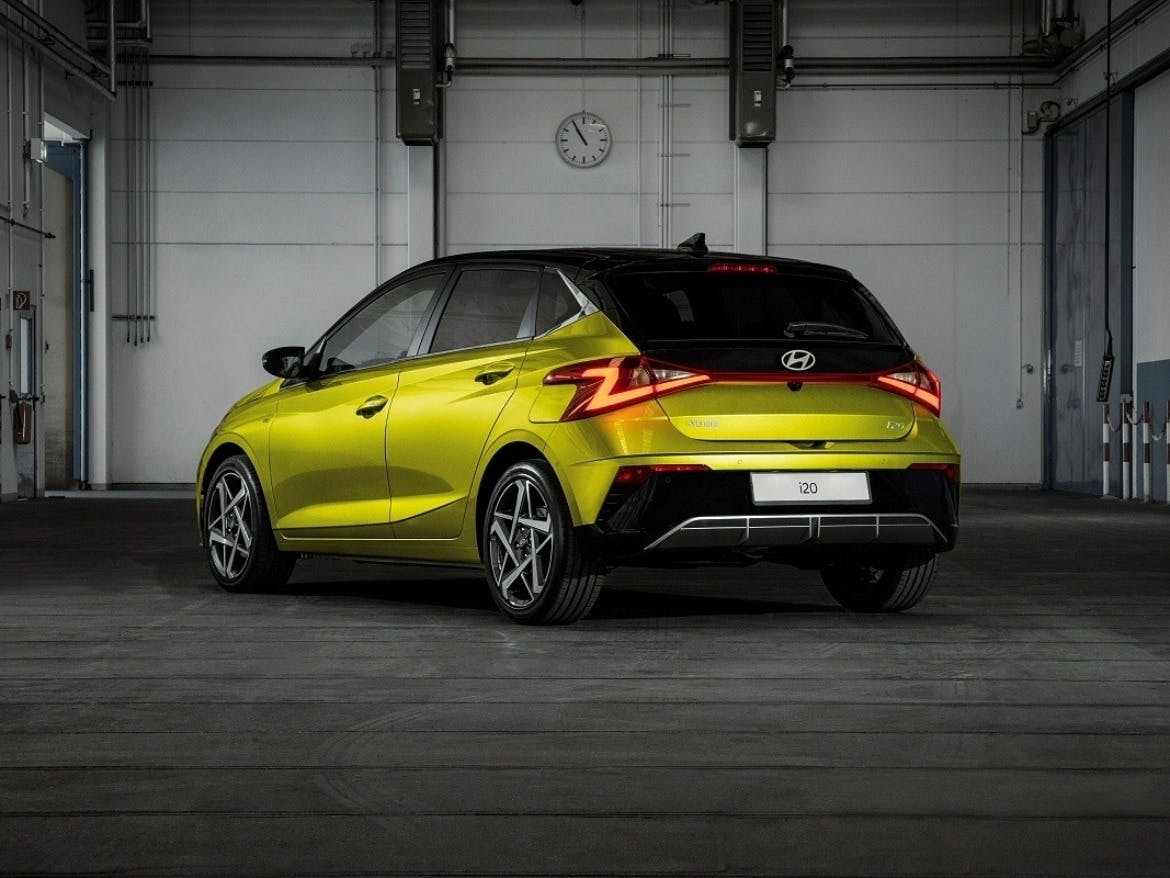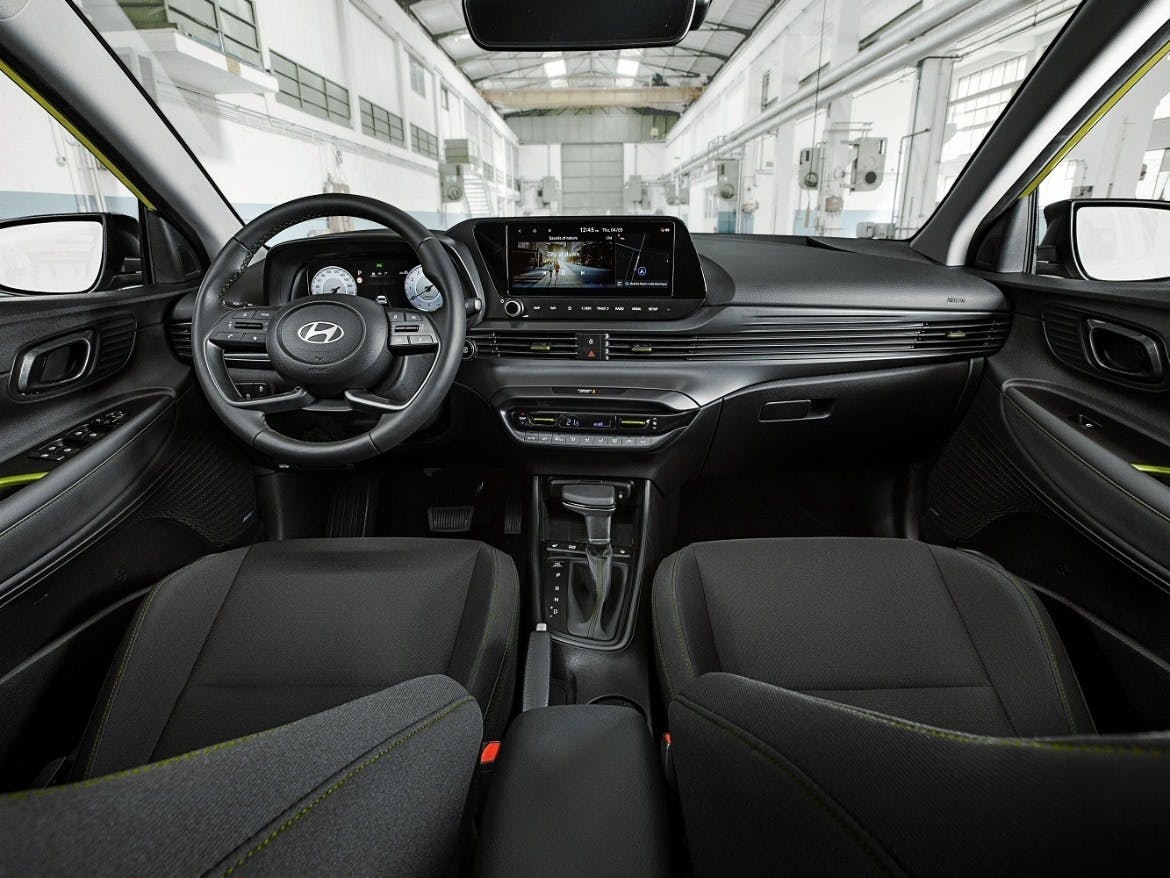
This Hyundai i20 is no longer just a budget choice for Motability customers. It now has the quality, the efficiency, the technology and the looks to go head-to-head with the supermini class leaders. If you're looking for a Motability car in this segment, the revised version of the third generation Hyundai i20 is a 5 door hatchback you shouldn't leave off your shortlist.
This month, these Hyundai i20 models can be ordered through the Motability Scheme:
Search all the Hyundai i20 Motability Advance Payment prices and trim levels for April, May and June 2024, or read our guide to the latest Motability price changes and updates here.
Hyundai i20 Motability Advance Payment Offers
We're used to hearing success stories from Hyundai, but in recent years, there's one important market segment this Korean company has found something of a struggle: that for superminis. The company's i20 model has always aimed to rectify that oversight, but the MK1 and MK2 versions (introduced respectively in 2009 and 2015) have had limited success in this regard. This third generation design aims to do better, aided by a much more eye-catching design and the introduction of a clever mild hybrid 1.0-litre T-GDi petrol powerplant.
Like its predecessors, it's been developed following a German-based product development programme and a demanding testing schedule on roads right across the Euro zone. This one, in other words, was created precisely for us. And three years into its production cycle, it's been usefully improved to create the car we're going to look at here.
Nothing much has changed beneath the bonnet with the revised version of this third generation i20. Various engines are being offered with this car in other markets but here, for mainstreams versions, we only get a single unit - a 1.0-litre T-GDi petrol powerplant, though it does come with a choice of outputs - either 100PS or, on the sporty 'N Line' models, with 120PS. Either way, you get a 48-volt mild hybrid powertrain, a system which harvests energy that would otherwise be wasted under deceleration and can redeploy that power to reduce load on the engine. This car is offered with either a 6-speed iMT manual gearbox or 7-speed 7DCT auto transmission. The 'iMT' manual 'box is interesting, featuring an electronic clutch able to decouple the gearbox from the engine when coasting to save fuel. At the top of the range, there's also a separate, rather wild, i20 N model, which uses a 1.6-litre four cylinder turbo petrol unit developing 204PS.
Across the range, the i20 has always made great play of being designed by Europeans, in Europe for European conditions, so it's no surprise that buyers of this model have always liked the way the car drives. With this MK3 version, the steering system is a brushless a/c electric motor-driven steering set-up that offers a really tight turning radius - which should make the car easy to navigate in town. Excellent forward visibility is enabled by the slim front A-pillars. Hyundai says that it's concentrated on keeping the steering light and direct, which should further help in an urban environment. This and the wheel-at-each-corner design makes each extremity of the car easy to position and it ought to be simplicity itself to park. Just as a supermini should be.



This third generation i20 supermini was the first of the Korean company's European models to feature its so-called 'Sensuous Sportiness' design language - and that's subtly evolved with this revised version. The shape and pattern of the front bumper and radiator grille have been restyled and the rear features another revised bumper and a unique Z-shaped LED tail lamp design. Plus there are freshly designed 16 and 17-inch wheels. As before, the wedgy side view of the single five-door body shape offers a bold side character line and an eye-catching C-pillar design.
Inside, this revised model feels a bit smarter than before thanks to the addition of multi-colour LED ambient lighting. The interior has plenty of soft-touch textured plastics, a smart four-spoke steering wheel and a fascia design broken up by horizontal slates that run the width of the interior and blend into the air vents. As you'd expect, infotainment is well taken care of, top versions featuring a 10.25-inch centre-dash touchscreen and a digital instrument binnacle panel. Lesser variants stick with an 8-inch centre monitor. Either way, 'Apple CarPlay'/'Android Auto' smartphone-mirroring is standard-fit. As is a 10.25-inch instrument screen - still unusual in the segment.
When it comes to the rear seat, you'll find that the doors open nice and wide and once inside, you'll find that this Hyundai has as much rear space for legs and knees as you could reasonably expect in this class. Headroom isn't quite so noteworthy, thanks to the tapering rear roof line, but the relatively low centre transmission tunnel means it's a bit more realistic to take a trio of passengers back here if you absolutely had to.
Lift the hatch and you're greeted with one of the more accommodating luggage areas in the segment, 352-litres in size. One day, a supermini maker will offer the flexibility of either a ski hatch or a 40:20:40 seatback split, but that day hasn't yet come, so there's just a conventional 60:40split backrest that lowers to reveal a 1,165-litre total capacity.
There's a single five-door body style and pricing that reflects the mild hybrid tech, sitting in the £20,000 to £25,000 bracket for mainstream models. These figures underline the fact that Hyundai no longer feels the need to pitch its products against bargain brands. As for equipment levels across the range, well Hyundai isn't holding back. There are four main trim levels - 'SE Connect', 'Premium', 'N Line' and 'Ultimate'. Upper-spec models get a 10.25-inch centre-dash AVN touchscreen and a digital instrument cluster of the same size. Wireless charging is now a fresh option, as is an 8-speaker premium BOSE audio system.
This revised model has been upgraded with a second-generation eCall system based on the 4G network, and Over-the-Air (OTA) map updates. It continues to offer features that were already popular in the previous version, such as the optional 10.25-inch cluster and 10.25-inch display screen, Apple CarPlay and Android Auto, wireless device charger, and an update to its Bluelink telematics set-up.
More Hyundai Smart Sense safety features now come as standard. Forward Collision-Avoidance Assist (FCA) for 'City', 'Interurban', and 'Pedestrian' now includes 'Cyclist'. FCA helps detect and avoid potential accidents with obstacles ahead. Lane Following Assist (LFA) ensures that the vehicle stays in the current lane of travel.
For additional peace of mind, optional safety systems are also available. Rear Cross-traffic Collision Assist (RCCA) applies the brakes while backing out of a parking space if a risk of collision with vehicles to the rear and side is detected. Blind-spot Collision-avoidance Assist (BCA) uses visual alerts that appear on the exterior mirrors if another vehicle is detected. When necessary, BCA activates to avoid a collision or reduce the impact of a collision. Navigation-based Smart Cruise Control (NSCC) uses the vehicle's navigation system to anticipate curves or straights on motorways and adjusts the speed for safer driving.
The 1.0-litre T-GDi petrol engine's 48-volt mild hybrid system contributes to a 3-4% reduction of fuel consumption and CO2 emissions. In terms of transmission, the 48-volt system is available with a seven-speed dual clutch transmission (7DCT) or a six-speed 'iMT' 'Intelligent Manual Transmission'. iMT decouples the engine from the transmission after the driver releases the accelerator, allowing the car to enter into a coasting mode for saving fuel. Thanks to its relatively light weight, the MK3 i20 offers very competitive CO2 values, helped of course by a standard 'Idle Stop and Go' engine stop/start system. For the 1.0 T-GDi manual 100PS model, think 55.4mpg on the combined cycle and 116g/km of CO2. The stand-alone i20 N hot hatch model manages 40.4mpg on the combined cycle and 158g/km of CO2.
One statistic tells you a lot about this i20: 88% of existing drivers order another one, a figure almost double that of typical rivals in this segment. Evidently then, people like it once they've tried it. You can see why. Certainly, it's hard to think of a supermini that would be easier to live with than this one, particularly in this updated form. Few others are more practical or better built, and this car remains affordable to lease through Motability. To these sensible virtues, this enhanced version of the third generation model adds smarter looks and a bit of extra technology.
Of course, it isn't perfect. Really, there needs to be more than just that single mainstream engine with its two outputs. We'd like to have seen the option, for instance of the full-Hybrid powerplant that Hyundai offers in its Kona small SUV. Overall, if you can find a car in this class that makes more sense when you add together all the really important attributes that families look for in a supermini in this segment, then you'll be doing very well.
People with a disability and carers who choose a new Hyundai i20 through Motability will receive a brand new car, delivered by a Motability Specialist at a local Hyundai dealership, complete with insurance, servicing and maintenance, full breakdown assistance, replacement tyre cover, windscreen repair or replacement cover plus a mileage allowance of 60,000 miles over three years.